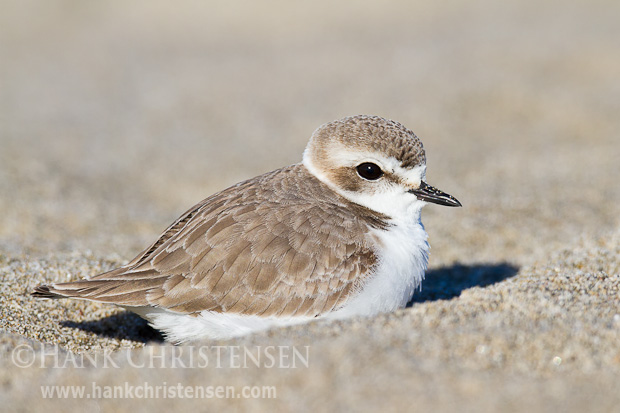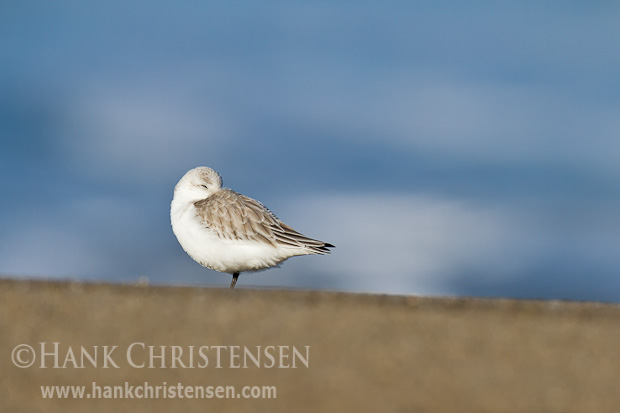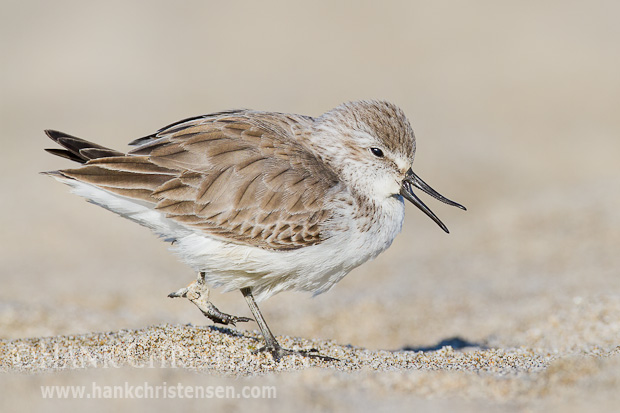
When I was in Moss Landing recently, I knew it would be a good opportunity to photograph snowy plovers in the sand, because they nest along the beach at the mouth of the harbor. Snowy plovers nest right in the open sand, which is why their nesting grounds are frequently protected along the California coast. It was still a little too early to see established nest sites, but they should be scoping some out.
After some searching, I found a few of them sitting down in the sand. They were just starting to come into breeding plumage. Not wanting to disturb them, I spend a good ten minutes creeping slowly closer, until I could create frame-filling shots like the one above. My tripod legs were fully splayed out in order to get the lens closer to the ground. I was pretty happy with my position and the fact that I had gotten as close as I needed to without disrupting the birds.
After making some shots, I looked up and saw a surfer emerge from the water a little ways up the beach. I thought he would continue walking toward the road, but then he saw me and starting walking in my direction. Unbelievably, he walked directly toward me fully in my lens’s line of sight. And he didn’t stop until he was standing next to me looking down at my prone form! Needless to see, the birds scattered as he tromped through their would-be nesting area. I was just staring at him (probably with a dropped jaw), incredulous that he would have so little common sense or self awareness.
“Getting some good photographs?” he asked.
“Well, I was,” I relied wryly. As the acclaimed bird photographer Art Morris is fond of saying, you gotta love it!
The scattered plovers were not to be refound, and I had to settle for the photos I already had. However, I spent some more time creeping up on some sanderlings and western sandpipers who were busy poking through shells and seaweed that had been washed up on the beach. These photos can be seen below.
I quick word to the non-photographers out there. If you are in a remote area and see someone concentrating on something with their camera, please please please don’t just walk up to them and interrupt without understanding what they’re photographing. This is especially important with wildlife that you can spook. The photographers of the world thank you.




